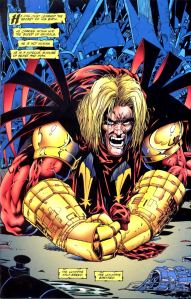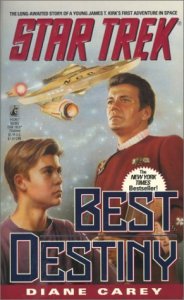Maximum Carnage
Cletus Kasady. One of the Marvel Universe’s most dangerous serial killers. He doesn’t need a reason to kill. He doesn’t want to. He worships chaos. He’d murder anyone and everyone in his way just to for the hell of it. In fact, the only time he’s happy is when people erupt into full-tilt pandemonium. Obviously a very deranged person. Now combine Kasady with an alien symbiote granting superhuman powers to its host. You turn Kasady into Carnage. It’s like giving dynamite to a child who burns anthills with a magnifying glass: you know that he’s going to enjoy killing the ants. Only Carnage won’t stop at the anthill. As long as chaos reigns, he’ll never stop.
Which brings us to Maximum Carnage, 1993’s fourteen comic-book crossover event. It details Carnage’s greatest murder spree yet. It begins with Kasady’s latest escape. Kasady transforms into Carnage and does the usual: whole-scale slaughter of the facility. Just as Carnage is about to leave, he chances upon fellow supervillain Shriek. For some strange reason (remember Carnage is insane; reasons don’t apply to him), Carnage joins forces with her, and along the way, forms an alliance with numerous other Spider-Man villains on his quest to spread murder and mayhem on a helpless New York. It’s only when Spider Man forms his own team of superheroes that Carnage’s destructive quest is foiled.
The genius of Maximum Carnage is that it provides precedent for situations that would follow for years to come. For example, this is the first time Spider Man joins forces with the vigilante Venom (another symbiotically-augmented anti-hero whose symbiotic “partner” spawned the Carnage symbiote). Ordinarily one of Spider Man’s deadliest foes, Venom puts his deep-seated hatred for Spider Man aside for the greater good. Apparently the team-up was so popular that it inspired a series of novels by author Diane Duane, not to mention Venom’s eventual transformation from villain to good guy. I guess people like having a hero with a taste for brains and long, prehensile tongues.
Maximum Carnage also provides a bit of insight into the character of Mary-Jane Watson-Parker, Peter Parker’s wife. Like any policeman’s family knows, there is a constant worry that their loved ones will die in the line of duty. The same could be said for superheroes. In the aforementioned scenario, Mary-Jane is trying desperately to distract herself from the fact that Peter has been Spider-Man for a week straight (something he promised he would not do). The reader sees Mary-Jane’s anger melt into fear, revealing the collateral damage that Spider Man’s presence does on those around him.
Perhaps most interesting is the dynamic between Carnage and his cohorts. The symbiotic serial killer comes to regard his allies as a family, with him and Shriek as the parents. At first this association serves merely as an example of Carnage’s unpredictable nature. But after some time passes, Carnage takes his “family” to the orphanage where Kasady spent an abusive childhood. This, of course, is not an excuse for Carnage’s destructive acts over the years, but it does provide insight into where it started for the world’s most dangerous serial killer.
Comic books need high stakes to be compelling. Maximum Carnage certainly meets those requirements. Not only did it provide a heroic side to the Spider Man villain Venom, but it also spawned a popular video game (the first of many). I guess it proves the old maxim: put a group of heroes together, and the bad guys don’t stand a chance. Enjoy.


















